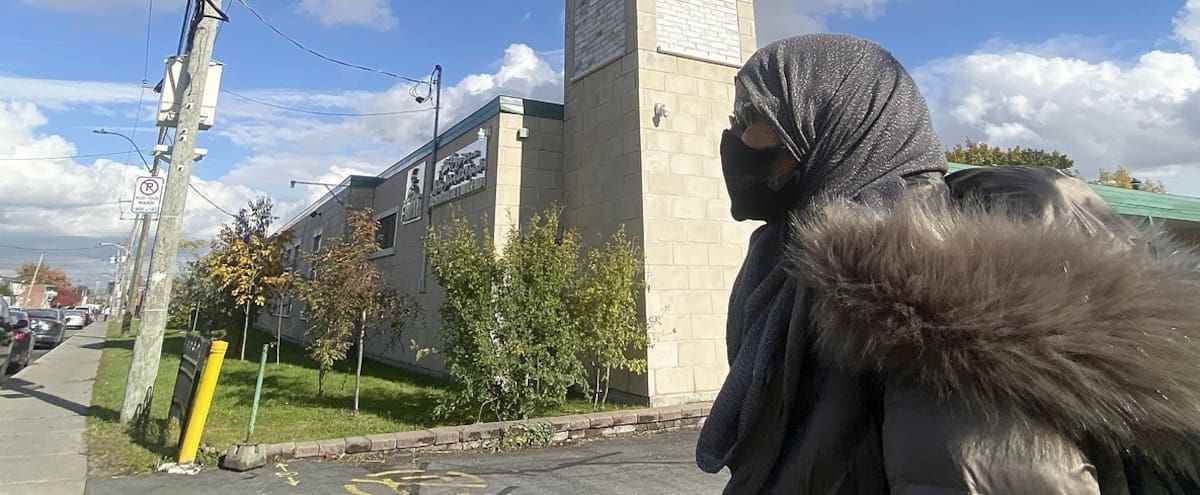A series of heinous incidents targeting veiled women in Montreal North worries members of the Muslim community and are denounced by the borough mayor.
• Read also: “Go home, cal ***”: a Montrealer arrested for hate crime
“Women would have been insulted in the public square on subjects related to their veil, to their way of being. We are talking about racism, intolerance”, reveals the borough mayor, Christine Black, in an interview with the Log.
This is alarmed that three hateful incidents targeting women wearing a hijab would have occurred in the space of six days in the borough, since Thursday, October 6. The three events were reported to Neighborhood Station 39 of the Service de police de la Ville de Montréal (SPVM).
According to our information, two of these incidents could be linked and targeted women while they were in their car. They would then have been insulted in connection with their religion and threatened gratuitously by an individual.
Photo Mario Beauregard / QMI Agency
Christine Black, Mayor of Montreal North
The third incident is said to have taken place in the workplace of another veiled woman who was also allegedly subjected to a xenophobic verbal attack.
“The SPVM is well aware of the events you mention,” replied the communications division of the Montreal police.
It was not possible to obtain more details from the SPVM, which mentions “reasons in particular of confidentiality, or even of protection of the people who provide information, who file a complaint or who are the subject of a complaint” .
“Really disturbing”
These events are of concern to members of the borough’s Muslim community.
“Really, it’s worrying and the police must intervene,” said Mahjouba Fahim, 65, crossed in front of the Noor Al-Islam Mosque in Montreal North after Friday prayers.
“I hope until it will not evolve, reacts for her part Mariam, 22 years old. We should find a solution now and not delay too much.”
“It should stop, adds Mariam. We’re tired of that. Already for veiled women, it is difficult to live, to find professional opportunities. To add that on top of that is not to make things easier.”
We must denounce, pleads the mayor
For her part, Mayor Christine Black maintains that “it makes no sense” that these attacks occur in her borough.
“In Montreal North, there are several communities that live together and people like each other. In this context, it is even more worrying.
“We condemn this and I say it loud and clear that it is unacceptable for women, regardless of their religion, to be arrested like this with racist remarks in connection with their religious sign”, adds the mayor.
If Ms. Black speaks publicly, it is also because the three victims were too afraid to do so.
“They seem very concerned to denounce, to go out in the public square for situations like that, supports Ms. Black. They are scared. For me, this is really a very worrying thing.”
The mayor thus wants to send the message that women who are victims of such acts are “supported and accompanied” and that they must denounce this type of aggression to the SPVM.
Since 2016, the latter has been collecting all the hate incidents reported to it, even if they do not involve a criminal offense under the law.
Witnesses or victims of a hate crime must report it to 911. A hate incident can, however, be reported via the SPVM website or by going to a neighborhood police station. These are processed by the Hateful Incidents and Crimes Module (MICH) with the aim of preventing hateful incidents “from becoming hate crimes”, explains the SPVM.
How do you distinguish a hate crime from a hate incident?
Examples of hate crimes:
• Physically attacking a person because of the color of their skin;
• Threatening a person because of their religious denomination;
• Vandalizing a home or a place of interest (eg a place of worship) with hateful graffiti.
Example of hate incidents (not criminal acts under the law)
• Disseminate offensive material targeting an ethnic group;
• Insult or insult a person on social networks, or otherwise, because of their sexual orientation;
• To make vexatious gestures towards a person because of his religion.
Source: SPVM

